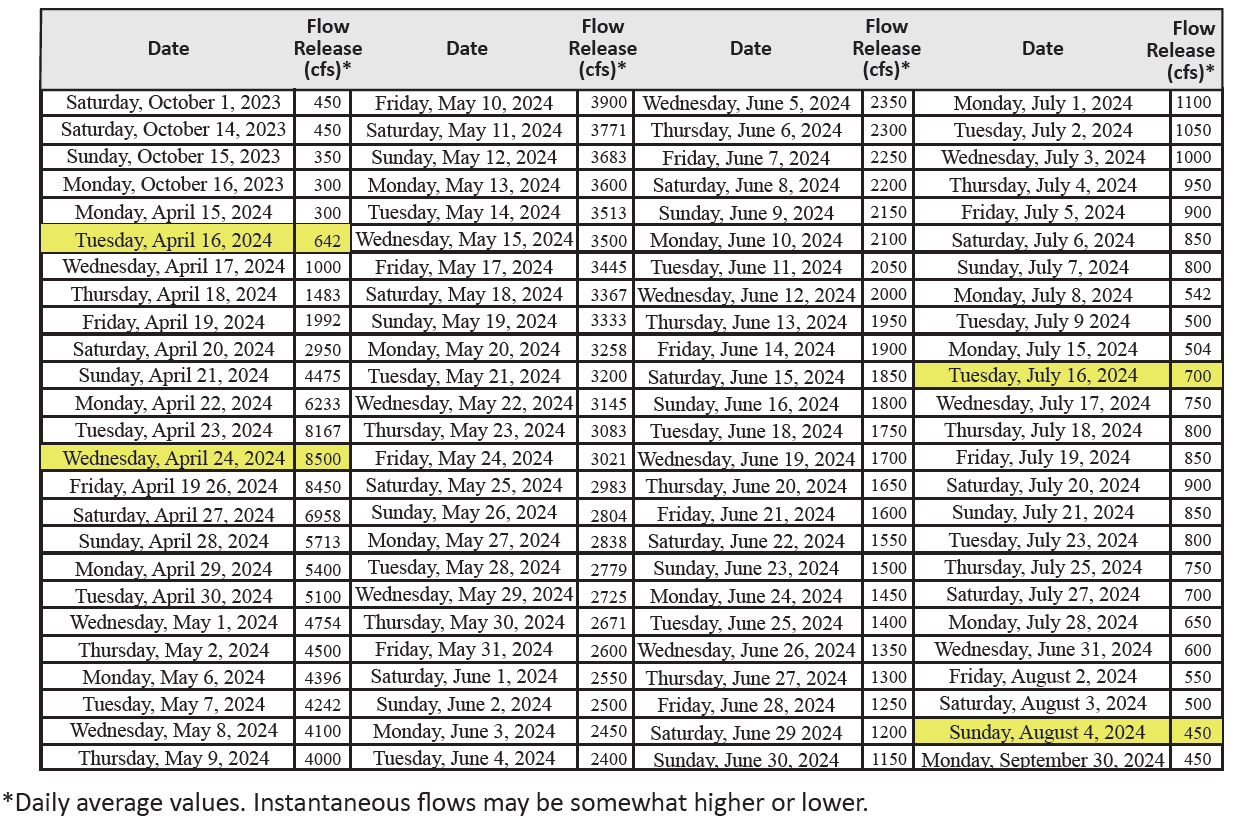The California Department of Water Resources April B-120 Water Supply forecast has determined the 2024 water year as “wet” with a total of 1,610,000 acre feet if inflow to Trinity and Lewiston Reservoirs. The determination sets the TRRP volume release at 701,000 acre feet for the year (see graph below).
Water-Year Volume Allocation as Specified by the Record of Decision.
| State Forecast Inflow to Reservoir (acre-feet) | Water Year Type | Allocation to Restoration (including base flows) |
|---|---|---|
| > 2,000,000 | Extremely Wet | 815,000 |
| 1,350,000 – 1,999,999 | Wet | 701,000 |
| 1,025,000 – 1,349,999 | Normal | 647,000 |
| 650,000 – 1,024,999 | Dry | 453,000 |
| < 650,000 | Critically Dry | 369,000 |
One acre-foot is the volume of water one foot deep in the area of one acre.
A water year is defined as October 1 through September 30.
The Water Year 2024 hydrograph, which is pending final approval by the U.S. Department of Interior, was discussed and modeled by the TRRP Flow Workgroup. If the recommended hydrograph is approved, flows will increase starting April 16, peaking at a daily average of 8,500 cubic feet per second. A gentle recession from that peak is designed to maximize riparian vegetation objectives.
ONLINE FLOW DATA
- Explore more flow information in our DataPort
- Trinity River watershed streamgage Data Package
Current Flows
Most data shown here are from the USGS via the waterservices site, plus the USBR and CDWR via the California Data Exchange. Data are provisional and may be recalculated before final approval. The TRRP site checks for new sub-daily values every 15 minutes and for new daily values twice per day. Note that “Full Natural Flow” is an automated estimate from CDWR of the flow that would naturally pass the Trinity Dam site if unimpeded – it is very sensitive to small variations in lake level measurements that may result in negative values when flows would naturally be low, but is more useful for storm events, snowmelt, and averages over longer times. The graphic for water released to the Trinity River versus the water diverted to the Central Valley tends to show higher values for the river until summer, when water exports to the Central Valley typically increase. Click here for a summary of Trinity River flow volumes.
| Parameter Linked to TRRP data viewer | Location Linked to TRRP online map | Time Measured | Value Linked to Source Website |
|---|---|---|---|
| Loading... | Loading... | Loading... | Loading... |
| Loading... | Loading... | Loading... | Loading... |
| Loading... | Loading... | Loading... | Loading... |
| Loading... | Loading... | Loading... | Loading... |
| Loading... | Loading... | Loading... | Loading... |
| Loading... | Loading... | Loading... | Loading... |
| Loading... | Loading... | Loading... | Loading... |
| Loading... | Loading... | Loading... | Loading... |
| Loading... | Loading... | Loading... | Loading... |
| Loading... | Loading... | Loading... | Loading... |
RESTORATION FLOW PAGES


